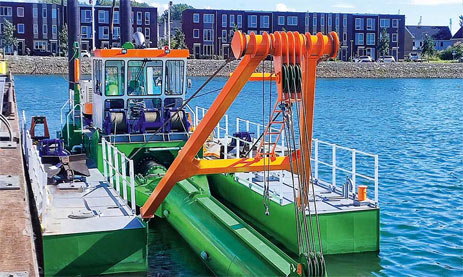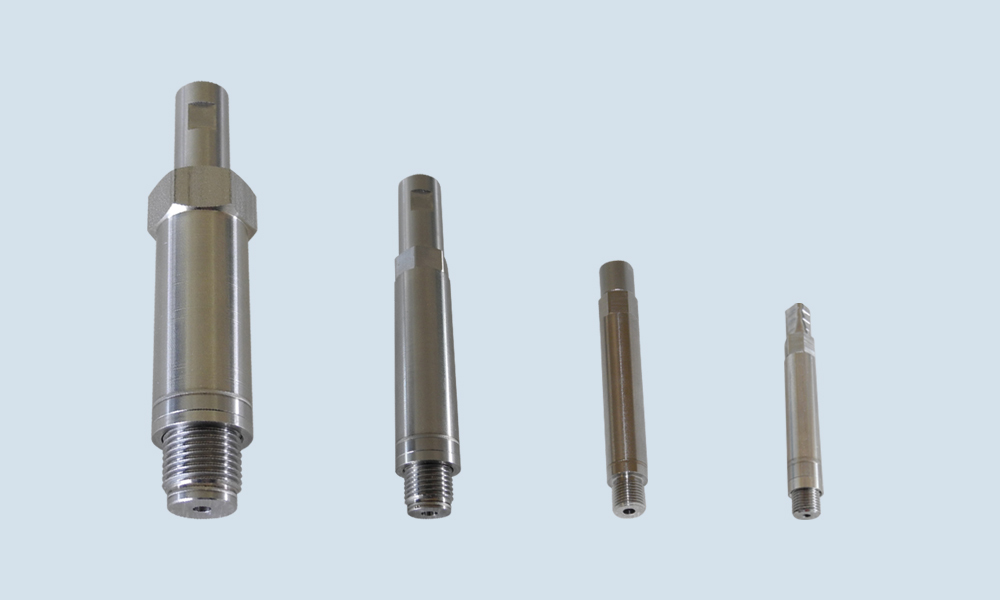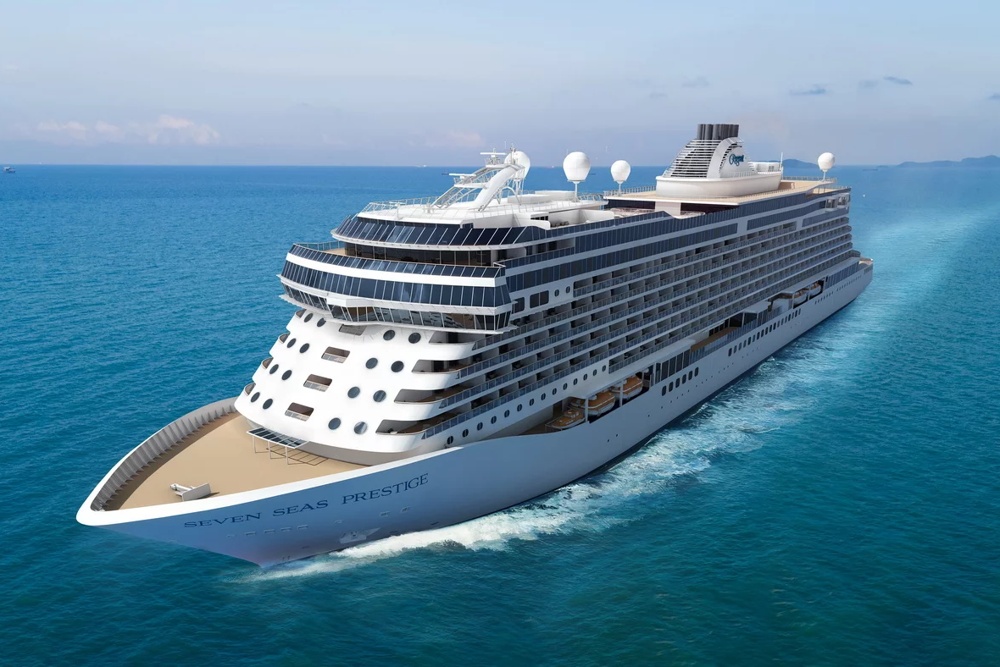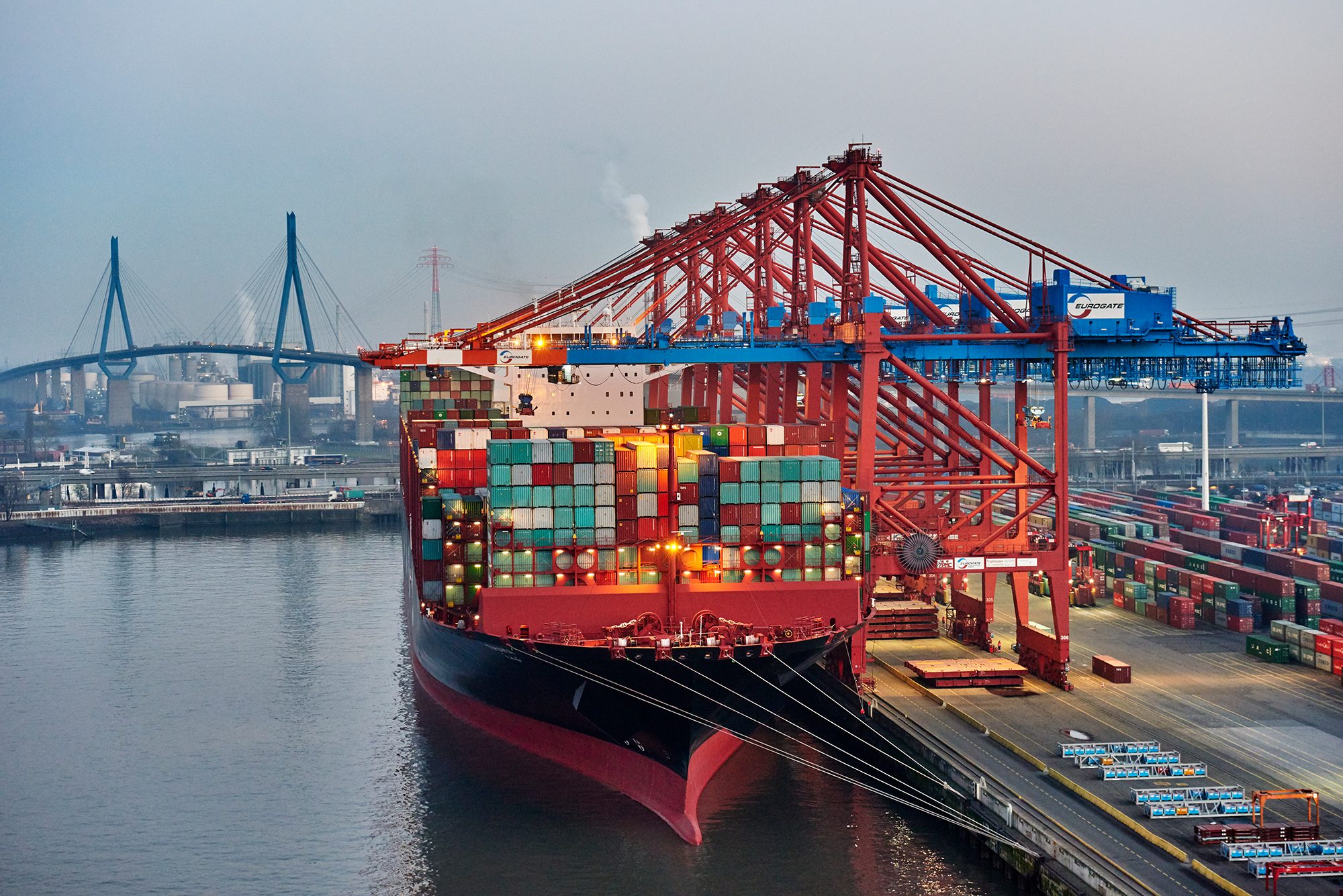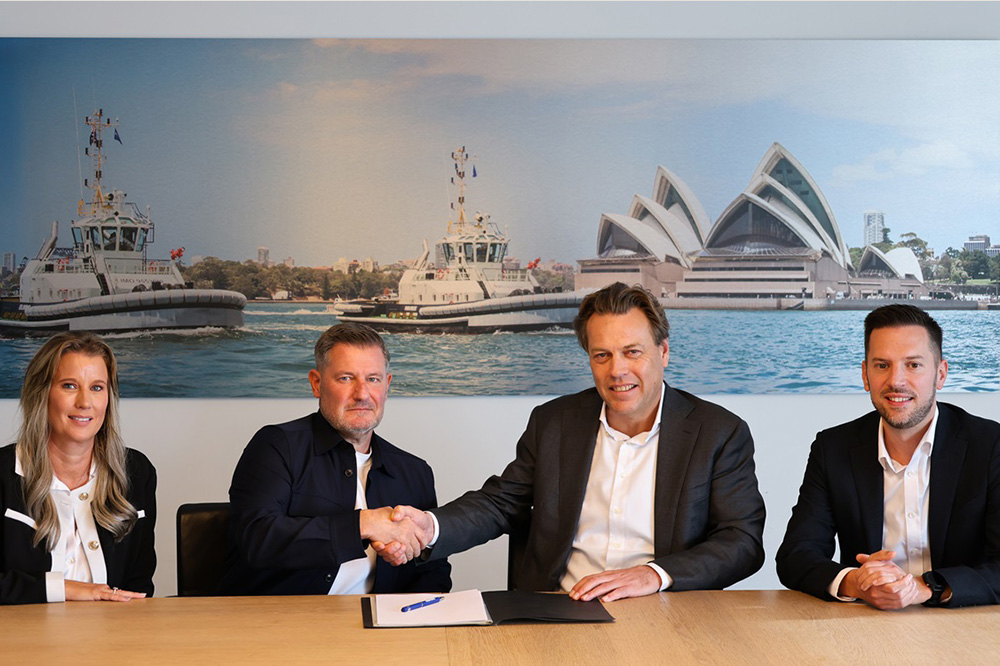The business environment for Germany’s largest seaport will remain volatile in 2025. Hamburg closed the past year with a slight drop in throughput due to various political and economic uncertainties.
Both the war in Ukraine and the conflicts in the Middle East had an impact on international trade and caused uncertainty on the global markets. In Germany, economic output fell by 0.2%. At the same time, industrial production fell by 4.5% compared to the previous year.
At a glance: Total throughput = 111.8 million tons = -2.1%
- Liquid cargo: 9.1 million tons = -14.4%
- Suction cargo: 6.3 million tons = -4.8%
- Grab cargo: 17.7 million tons = -6.6%
- General cargo: 1.3 million tons = +8.7%
- Containers: 78.7 million tons = +0.7%
- Container TEU: 7.8 million TEU = +0.9%
“Despite these challenges, the Port of Hamburg succeeded in growing container throughput again,” the responsible organization Port of Hamburg Marketing (HMM) announced today. The “positive development” in container traffic with the USA continued in 2024 and container throughput with China recovered, according to the data.
Total seaborne cargo throughput is reported at 111.8 million tons. This is 2.1 percent less than in the previous year. Container throughput in the Port of Hamburg rose by 0.9% compared to 2023 to 7.8 million TEU. 87% of this throughput is attributable to loaded containers.
“The annual result shows how resilient the Port of Hamburg is in a difficult market environment. In particular, the large share of throughput of loaded containers indicates that shippers regard the port as a reliable partner that is proving to be a strong link in the global logistics chain. In addition, the Port of Hamburg’s efficient hinterland traffic can look back on a successful year,” said HHM CEO Axel Mattern.
Growth in key markets
Trade with China, an important market for Hamburg, grew by 0.7% to 2.2 million TEU last year. The country thus remains the most important trading partner ahead of the USA, which set a new record with 685,000 TEU and an increase of 5.0%. India, as an emerging market, also showed a positive result with growth of 2.1% to 195,000 TEU. In addition, throughput with Sri Lanka, the largest transhipment hub for the Indian subcontinent, rose to 140,000 TEU (+12.4%).
More ships calling at Hamburg
The total number of ship calls with capacity for container cargo in the Port of Hamburg was 0.3% higher than in the previous year. The security situation in the Red Sea continues to determine global cargo shipping. Routes are being changed and ships diverted due to longer transit times. As a result, fewer Megamax ships, which are used in particular for traffic through this sea area, called at Hamburg. At the same time, handling volumes in the Port of Hamburg increased considerably per call. This led to an average of well over 10,000 TEU being handled by mega-max container ships. This corresponds to an increase of more than 20 percent.
“Nowhere is the energy turnaround more visible than in the figures for bulk cargo handling,” it continues today. The decline in the use of fossil fuels had an impact on the handling result. Companies in the port industry imported 3.8 million tons of coal, 2.1 percent less than in the previous year. The figure for mineral oil products was 5.7 million tons, 21.7 percent less. “This decline is partly due to exceptionally high throughput in 2023,” di explained. In addition, lower demand in 2024 due to weaker economic performance and mild temperatures led to lower imports.
Bulk cargo throughput totalled 33.1 million tons (-8.6% compared to the previous year). Positive highlights included “the 5.6% increase in imports of oilseeds to 3.2 million tons and the 9.4% increase in exports of animal feed to 1.4 million tons”.
Rail clearly ahead in hinterland traffic
With a volume of 5.2 million TEU, the Port of Hamburg’s hinterland traffic transported more goods than in 2023. Transhipment recorded a value of 2.6 million TEU. In terms of tons, hinterland transport amounted to 83.1 million tons and transhipment to 28.7 million tons.
In terms of modal split, rail is particularly noteworthy, moving 46.2 million tons (+1.3 % compared to the previous year) and 2.6 million TEU (+2.5 %) in 2024. With a 50.2% share of container transportation, rail once again managed to break through the 50% mark. “This good result is also due to the high capacity utilization of container trains,” writes HHM. Rail also made gains in the tonne-based modal split. At 55.6%, rail’s share was 2.1 percentage points higher than in 2023. “The result underlines our position as Europe’s largest rail port and consolidates our market leadership,” emphasized HHM CEO Axel Mattern.
Uncertain outlook
“The international situation will remain highly volatile for the foreseeable future due to the large number of international crises,” the Hamburg-based company expects. At the same time, the German government is forecasting growth of just 0.3% for the German economy. “This will continue to affect the port’s handling figures.”










